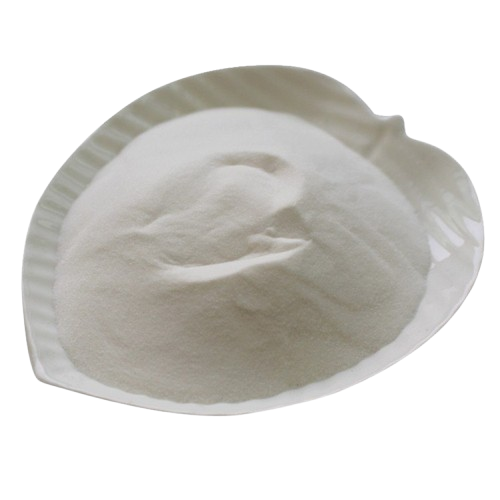In the global of biopharmaceuticals, proteins like Transforming Growth Factor Alpha (TGF-α) are a key factor for companies looking to remain competitive in this growing field. From its potential use in cancer therapies to its importance in regenerative medicine, understanding the Transforming Growth Factor Alpha Production Cost is critical for businesses involved in its development and commercialisation. At Procurement Resource, we are committed to providing businesses with reliable, data-driven insights into the costs associated with TGF-α production.
TGF-α is a critical protein involved in regulating cell growth, differentiation, and tissue repair processes. Its application spans across numerous therapeutic areas, including cancer treatment, fibrosis, wound healing, and even in regenerative medicine. Due to the significant therapeutic potential of TGF-α, its production has garnered attention from biopharmaceutical companies and research institutions. However, one of the major challenges faced by companies is ensuring cost-effective production, which remains a critical factor in making these therapies accessible and commercially viable.
Request a Free Sample For Transforming Growth Factor Alpha Production Cost Reports — https://www.procurementresource.com/production-cost-report-store/transforming-growth-factor-alpha/request-sample
The Growing Demand for TGF-α
As a cytokine involved in multiple cellular processes, TGF-α has become a focal point in cancer research, particularly in the development of targeted therapies for cancers such as lung, breast, and colorectal cancers. Additionally, its role in tissue regeneration and repair makes it an appealing candidate for treatments in dermatology and wound healing. The increasing application of TGF-α in clinical settings has led to growing demand, pushing companies to focus on optimising production methods to meet market needs while controlling production costs.
Understanding the production costs of TGF-α can help manufacturers make strategic decisions on pricing, scaling, and process improvements. Having access to up-to-date, accurate data on production costs allows businesses to maintain a competitive edge, particularly in a market where cost control can dictate the success or failure of a product.
Key Factors Behind Transforming Growth Factor Alpha Production Costs
Several factors influence the cost of producing TGF-α. By breaking down these elements, businesses can gain a better understanding of how each factor contributes to the overall production cost.
1. Raw Material Costs
The production of TGF-α typically requires high-quality raw materials, including culture media, reagents, and the genetic material used to express the protein. For recombinant TGF-α, the raw materials include bacterial or mammalian cell lines, plasmids, and other essential components like antibiotics, growth factors, and salts. The cost of these materials can vary significantly depending on the scale of production and the quality of the materials used.
For instance, cell culture media, which is a primary component in the production of TGF-α using mammalian cells, can be one of the most expensive inputs. These media are often formulated with high-end ingredients that promote cell growth and protein production. The cost of raw materials can fluctuate based on supplier pricing and the scale at which the production process is being carried out.
Read Full Report — https://www.procurementresource.com/production-cost-report-store/transforming-growth-factor-alpha
2. Energy Costs
Energy consumption is another significant factor that affects the production cost of TGF-α. Biotechnological processes, especially those involving cell culture, require continuous temperature, pH, and oxygen level monitoring, all of which demand energy-intensive equipment such as incubators, bioreactors, and chillers. As bioreactor volumes scale up, the energy required for maintaining optimal growth conditions increases, which can drive up production costs.
Additionally, the use of advanced technologies like automated cell culture systems, which help optimise the production process, can also contribute to higher energy consumption. Companies need to factor in these energy costs when assessing the feasibility and profitability of large-scale TGF-α production.
3. Labor and Operational Costs
The production of TGF-α involves complex, multi-step processes, each of which requires skilled labour and specialised equipment. From the design of the expression systems (whether bacterial, yeast, or mammalian cell-based) to the purification and quality control stages, labour costs can constitute a significant portion of the overall production cost.
Biopharmaceutical companies often rely on highly skilled scientists, engineers, and technicians to oversee the production, purification, and testing of TGF-α. Operational costs can also include the costs of maintaining production facilities, conducting routine maintenance of equipment, and ensuring compliance with Good Manufacturing Practices (GMP). These labour and operational expenses can add up, particularly in large-scale production environments.
4. Technological Advances and Maintenance
Technological advancements in bioprocessing have greatly influenced TGF-α production. New technologies such as single-use bioreactors, improved purification techniques, and continuous flow systems can improve production efficiency and reduce costs in the long term. However, the initial investment in these technologies can be high.
The maintenance and upgrade of such systems also come at a cost, which companies must consider when assessing their overall production cost. Staying updated with the latest advancements and maintaining cutting-edge facilities requires continuous investment in both time and money.
5. Environmental and Regulatory Costs
Like all biopharmaceutical products, TGF-α production is subject to strict environmental and regulatory standards. Companies need to ensure that their production processes comply with guidelines set by regulatory authorities such as the U.S. Food and Drug Administration (FDA) and the European Medicines Agency (EMA). Compliance with these regulations often involves significant expenditures related to process validation, quality control, and environmental impact assessments.
Ask an Analyst - https://www.procurementresource.com/production-cost-report-store/transforming-growth-factor-alpha/ask-an-analyst
Waste disposal, emissions control, and water usage are other environmental factors that can affect the overall production cost of TGF-α. The disposal of biohazardous materials and maintaining a sustainable production process can contribute to higher costs, especially in regions with stringent environmental regulations.
The Role of Procurement Resource’s TGF-α Production Cost Reports
At Procurement Resource, we provide comprehensive reports that offer detailed insights into the various factors influencing TGF-α production costs. These reports allow businesses to make informed decisions regarding their production processes, helping them optimise costs and improve efficiency.
Our TGF-α production cost reports cover everything from raw material pricing and energy consumption to labour costs and technological advancements. We provide data-driven analysis that can help companies assess market trends, forecast future costs, and identify cost-saving opportunities. By understanding the various factors that contribute to TGF-α production costs, businesses can better position themselves to remain competitive in an increasingly complex market.
How Procurement Resource Can Help
Procurement Resource is dedicated to helping businesses stay ahead of market trends and make informed decisions. Our team of experts provides up-to-date reports, cost breakdowns, and analysis tailored to the unique needs of each client. Whether you’re involved in research and development, production, or distribution, our insights can provide valuable guidance as you navigate the complexities of TGF-α production.
Our reports not only highlight key cost drivers but also offer strategic advice on how to optimise production and reduce costs. By leveraging our comprehensive data, businesses can make informed decisions about scaling production, sourcing raw materials, and investing in technology. With access to Procurement Resource’s detailed TGF-α production cost reports, companies can maintain their competitive edge and capitalise on emerging opportunities in the biopharmaceutical market.
Stay Ahead of Market Trends with Procurement Resource
In today’s competitive biopharmaceutical landscape, staying ahead of market trends is more important than ever. TGF-α is poised to play a major role in future therapeutic applications, but companies must be able to manage production costs effectively in order to succeed. Procurement Resource’s reports give businesses the tools they need to navigate the complexities of TGF-α production, helping them remain competitive in a rapidly changing market.
Request Your Free Sample Report Today
If you’re looking to gain a deeper understanding of TGF-α production costs, request your free sample report from Procurement Resource today. Our detailed, data-driven reports are designed to provide actionable insights, enabling you to make informed decisions that drive your business forward. With our expertise and market intelligence, you can optimise your production processes, reduce costs, and stay ahead of the competition.
By having access to our comprehensive cost reports, your business will be equipped to handle the challenges of TGF-α production and take full advantage of the opportunities presented by this valuable biopharmaceutical. Let Procurement Resource be your trusted partner in navigating the evolving landscape of TGF-α production and commercialisation.
Request a Free Sample — https://www.procurementresource.com/production-cost-report-store/transforming-growth-factor-alpha/request-sample
Contact Us:
Company Name: Procurement Resource
Contact Person: Leo Frank
Email: sales@procurementresource.com
Toll-Free Numbers:
- USA & Canada: +1 307 363 1045
- UK: +44 7537171117
- Asia-Pacific (APAC): +91 1203185500
Address: 30 North Gould Street, Sheridan, WY 82801, USA




